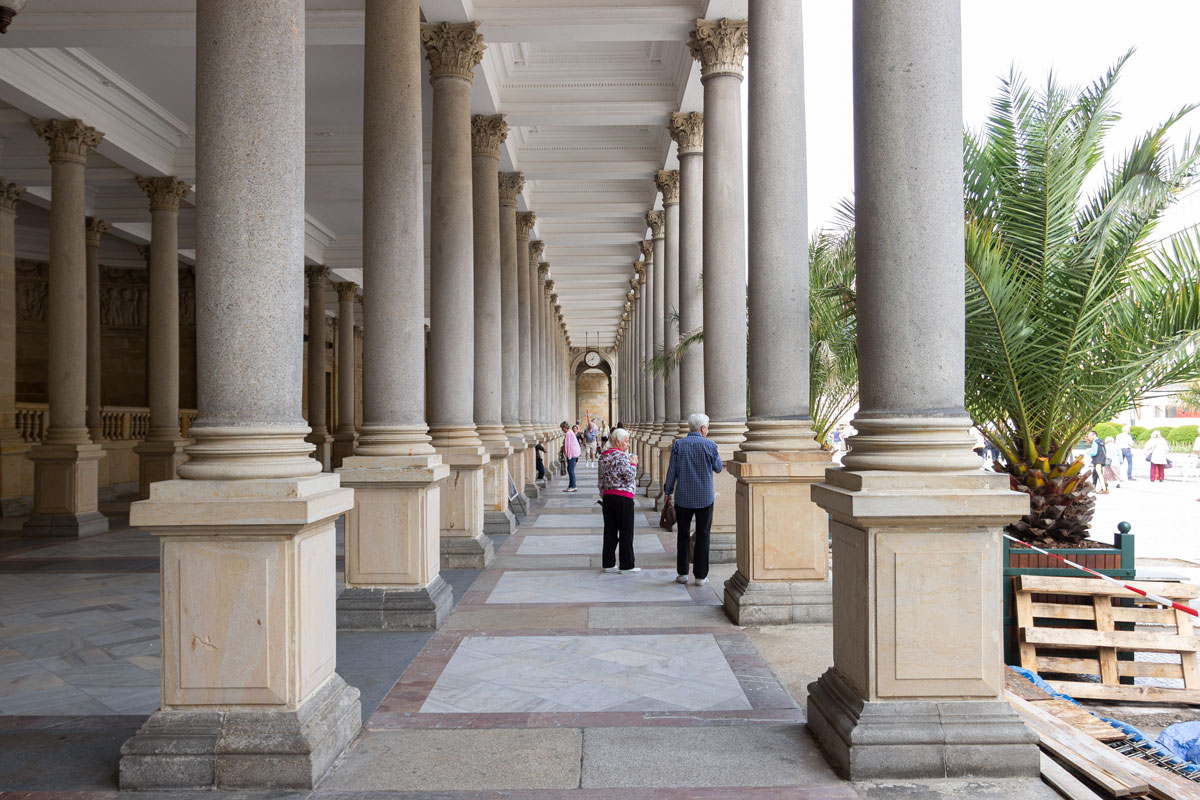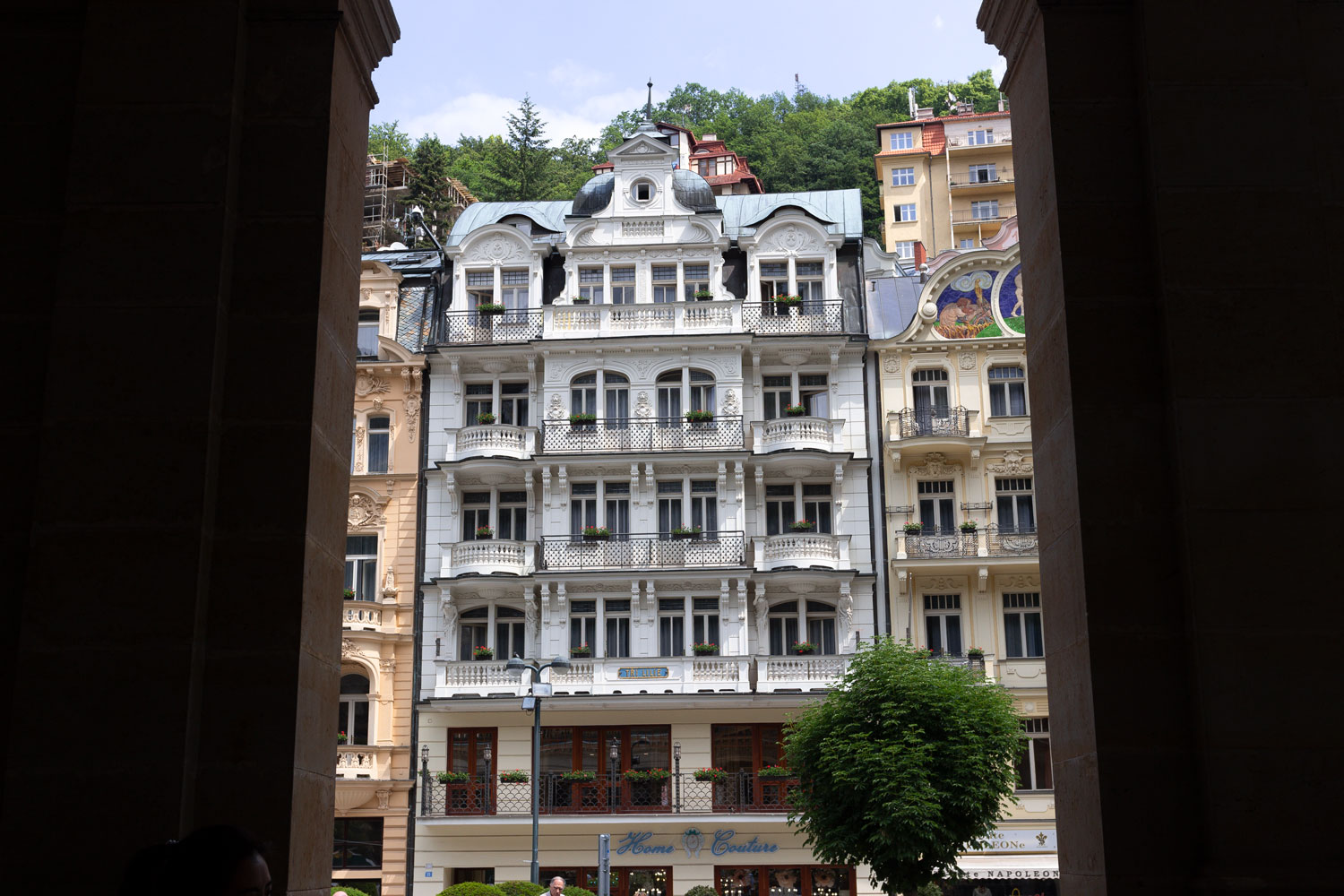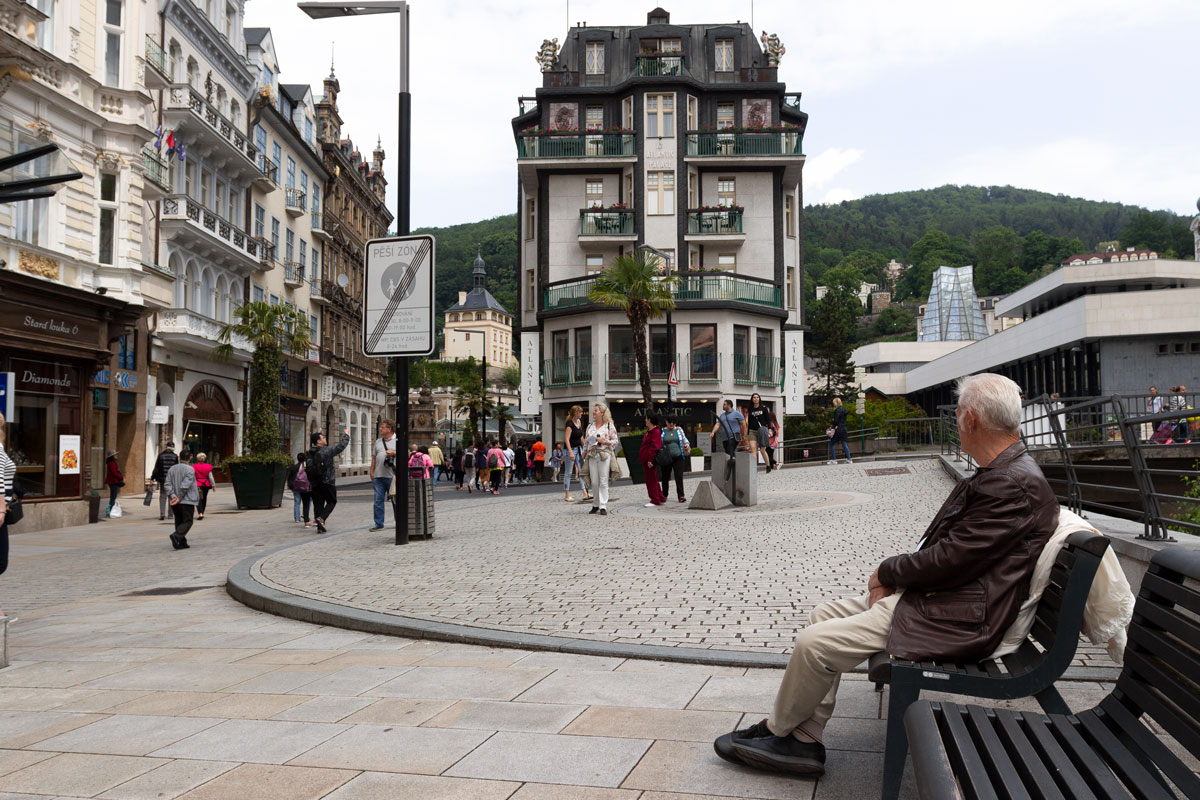Karlovy Vary
If the Czech Republic is the worst embodiment of Russian tourism, then Karlovy Vary is a sanatorium pearl of the European region, which has long been famous for its hot springs, the healing properties of which have been known for eight centuries!

The city-forming enterprise of Karlovy Vary is the Becherovka liqueur factory. All locals who haven’t found a job in a matryoshka shop go to work at the factory.

Bottles of liqueur are scattered all over the city.

Karlovy Vary is a big advertisement for mediocre alcohol on a municipal scale.

Becherovka is not the only liquid that tourists come to Karlovy Vary for. There are many thermal springs in the city, about 15 of them. Each spring has its own name, for example: Snake Spring, Garden Spring, Vřídlo, Libuše, Tržní, and Geyser-Bulbous.
When you’re just heading to Karlovy Vary, you imagine some beautiful springs gushing from the ground under sprawling linden trees. It turns out that the springs are lined up in a row along the embankment and covered with a roof with columns.

The springs themselves are concrete bowls in the floor, into which columns resembling a village well are inserted. Healing water constantly flows from the columns, which tourists collect in bottles.

That’s about the whole city. Otherwise, Karlovy Vary is an endless stream of hotels.



The architecture of Karlovy Vary is uniform, but that’s what makes it good — rarely does a building stand out from the overall city style, a mixture of Baroque and Neoclassicism.


The city is undoubtedly boring, but it doesn’t cause rejection. Indeed, Karlovy Vary does its job well. It’s a great healing resort for retirees.

And here’s a rare entertainment: to ride in a carriage.

Geographically, Karlovy Vary is stretched along a river that is squeezed between hills. Rosa Khutor was clearly built with a reference to the Czech Republic.
Residential houses are located on one of the slopes. To reach them, you need to climb a hill through a rather shabby park.

I didn’t recognize who lives in these houses. Probably, most of them are summer houses of some well-known Russian celebrities and locals who serve these celebrities.


There are cheap five-story buildings.

And there are quite expensive mansions.

View of the city from the hills.

Among all this silence and grace, there is one place — the congress center and the Thermal hotel. It’s a monstrous gray concrete building in the style of Soviet modernism, built in the 70s when Czechoslovakia was under strong influence from the USSR.
Here’s this monster:

As one reputable architectural portal asserts, “the idea of building this structure was dictated not only by pragmatic considerations (the need to accommodate numerous festival guests) — it was necessary to create a new symbol of Karlovy Vary.”

Well, what can I say. The symbol turned out to be successful. The Soviets managed to shove this monster right against the cozy background of Karlovy Vary hotels.

Now, in this center, the same well-known Russian celebrities perform, such as Gennady Vetrov, cheap clothes are sold, and in general, the building stands abandoned, and all the residents of Karlovy Vary hope that it will be blown up, like skyscrapers in Las Vegas.

It would seem that Karlovy Vary and the USSR are completely different things. But they even screwed up here. No, the building itself is good in its style, Soviet architects put their soul into it. It’s just that this house shouldn’t be here.



